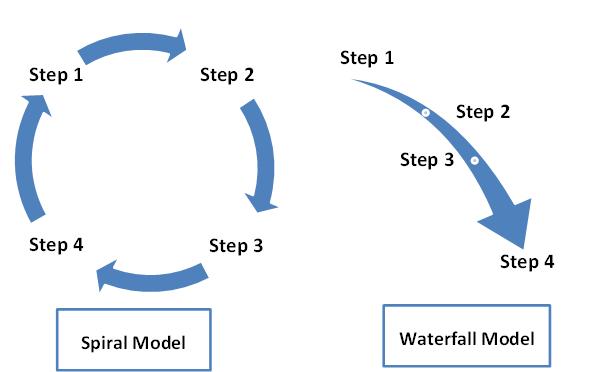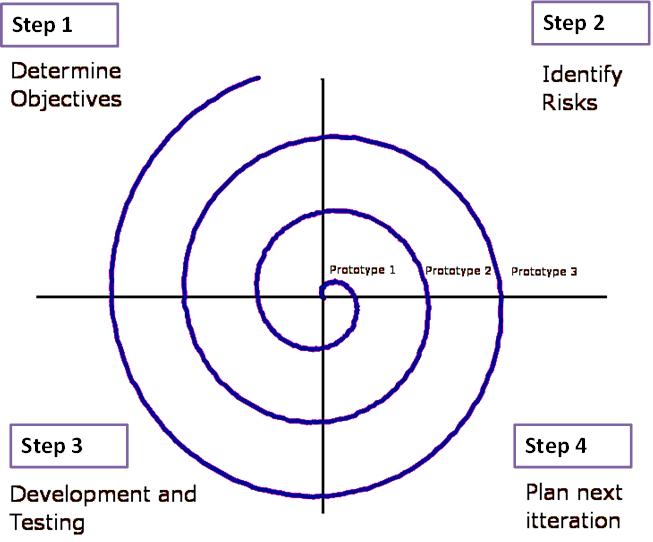So you have understood the Waterfall Model of Software Development Life Cycle in the previous post. This post is about another popular methodology used by many offshore software development vendors for building the software – the Spiral Model.

This model is most widely used for big projects which are complex and expensive. The best feature of this model is that every step of creation of the software is regularly re-visited. It proceeds like a cycle where after completing the last step you return again to the first step.
And this is the main difference between the Spiral and Waterfall model. In Waterfall, like the flow of gravity, the steps flow only downward and you can’t reverse this order even if you want. After Step 1 is completed, you have to go to Step 2 and you can’t go back to Step 1. And after the last step is completed, you can’t go back to any of the previous steps.
But every time you finish the step 4, you release a Prototype of your software. So now the Prototype 1 re-enters the cycle, and proceeds till step-4 when Prototype -2 is released. This leads to incremental release of the software and increasing refinement each time it goes around the spiral.
The four steps of the Spiral Model are:
- Determine Objectives: Find out the purpose of the software and identify the measures to be taken to achieve the software that serves all your requirements.
- Identify Risks: Calculate all the possible risks that you may encounter and figure out how you would resolve these risks.
- Development and Testing: Create the software and test it for its functionality, reliability and security.
- Plan next Iteration: After you have completed one cycle and got your first Prototype, then re-plan and repeat the cycle so that in, you may proceed to get your next Prototype 2.

So choose the Spiral Model when you want to get the perfect refined software!
